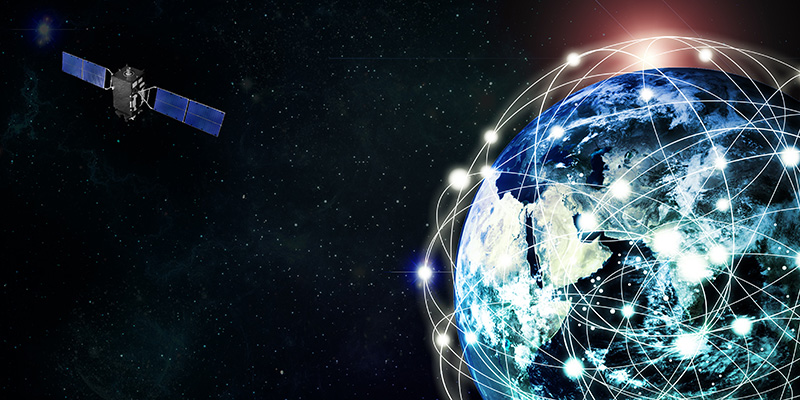Satellites – from science fiction to universal coverage

In 1945, the science fiction writer Arthur C. Clarke published an article in the U.K. journal Wireless World that laid out the potential of geostationary orbit for satellite communications.
When a satellite orbits the earth at a certain height it appears from the ground to be stationary allowing an aerial to transmit to and receive from the satellite without having to adjust its orientation. The satellite can then act as a radio relay station in space allowing international communications.
The first active communications satellite, Telstar, was launched in 1962 and relayed the first publicly available live transatlantic television broadcast between North America and Europe.
Telstar was launched into a medium earth orbit (well below geostationary) so the large earth station aerials had to track its path with communications lasting for just 30 minutes.
The first geostationary orbit (GEO) satellite to provide commercial services was launched in April 1965. Intelsat1 (also known as “Early Bird”) provided uninterrupted contact between Europe and North America for television, telephone, and fax transmissions.
Until the expansion of the web of optical fibre submarine cables, GEO satellites using earth stations with large dish antennae relayed most international telephone calls between continents.
In 2003, Eutelsat’s eBird GEO satellite provided Internet access for those in remote areas including ships at speeds comparable to that provided by ADSL over telephone lines, the predominant broadband service at the time.
Advances in technology and the use of higher radio frequencies led to higher speeds in later generations of GEO satellite with access to broadband services provided by very small aperture terminals (VSAT). However, the long distances that signals have to travel leads to long delays between sending and receiving signals.
Then came low earth orbit satellites. As the name suggests, these orbit at a much lower height allowing even faster broadband speeds and much lower delay. However, as LEO satellites move across the sky, a constellation of satellites are required for an uninterrupted service with small, electronically steerable antennae following the satellites’ movement.
There are now over 7500 communications satellites orbiting the earth with the majority being LEO. LEO satellite services have the potential to eliminate Internet access dead zones around the world.
Other uses include providing inflight connectivity for aeroplane passengers and providing backhaul connections between mobile operators’ networks and their base stations in remote areas.
Providing connections to the Internet of Things (IoT) including weather monitoring devices is another possibility.
But perhaps the biggest impact on telecommunications services will be so-called direct to device (D2D) applications where the satellite transceiver is built into devices such as conventional mobile phones. Then ubiquitous access to 4G or 5G mobile services will be possible even when out of range of terrestrial base stations.
SpaceX recently launched six D2D satellites with others planned to provide a constellation of 21 D2D satellites.
You can learn more about satellite communications from the PTT online course “Wireless communications“.